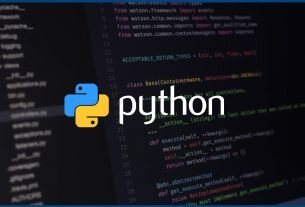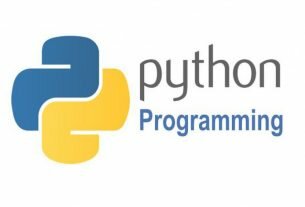Question or problem about Python programming:
Question: Because of python’s use of “GIL” is python capable running its separate threads simultaneously?
Info:
After reading this I came away rather uncertain on whether or not python is capable of taking advantage of a multi-core processor. As well done as python is, it feels really weird to think that it would lack such a powerful ability. So feeling uncertain, I decided to ask here. If I write a program that is multi threaded, will it be capable of executing simultaneously on multiple cores?
How to solve the problem:
Solution 1:
The answer is “Yes, But…”
But cPython cannot when you are using regular threads for concurrency.
You can either use something like multiprocessing, celery or mpi4py to split the parallel work into another process;
Or you can use something like Jython or IronPython to use an alternative interpreter that doesn’t have a GIL.
A softer solution is to use libraries that don’t run afoul of the GIL for heavy CPU tasks, for instance numpy can do the heavy lifting while not retaining the GIL, so other python threads can proceed. You can also use the ctypes library in this way.
If you are not doing CPU bound work, you can ignore the GIL issue entirely (kind of) since python won’t aquire the GIL while it’s waiting for IO.
Solution 2:
Python threads cannot take advantage of many cores. This is due to an internal implementation detail called the GIL (global interpreter lock) in the C implementation of python (cPython) which is almost certainly what you use.
The workaround is the multiprocessing module http://www.python.org/dev/peps/pep-0371/ which was developed for this purpose.
Documentation: http://docs.python.org/library/multiprocessing.html
(Or use a parallel language.)
Solution 3:
CPython (the classic and prevalent implementation of Python) can’t have more than one thread executing Python bytecode at the same time. This means compute-bound programs will only use one core. I/O operations and computing happening inside C extensions (such as numpy) can operate simultaneously.
Other implementation of Python (such as Jython or PyPy) may behave differently, I’m less clear on their details.
The usual recommendation is to use many processes rather than many threads.
Solution 4:
example code taking all 4 cores on my ubuntu 14.04, python 2.7 64 bit.
import time
import threading
def t():
with open('/dev/urandom') as f:
for x in xrange(100):
f.read(4 * 65535)
if __name__ == '__main__':
start_time = time.time()
t()
t()
t()
t()
print "Sequential run time: %.2f seconds" % (time.time() - start_time)
start_time = time.time()
t1 = threading.Thread(target=t)
t2 = threading.Thread(target=t)
t3 = threading.Thread(target=t)
t4 = threading.Thread(target=t)
t1.start()
t2.start()
t3.start()
t4.start()
t1.join()
t2.join()
t3.join()
t4.join()
print "Parallel run time: %.2f seconds" % (time.time() - start_time)
result:
$ python 1.py Sequential run time: 3.69 seconds Parallel run time: 4.82 seconds
Solution 5:
Threads share a process and a process runs on a core, but you can use python’s multiprocessing module to call your functions in separate processes and use other cores, or you can use the subprocess module, which can run your code and non-python code too.
Solution 6:
I converted the script to Python3 and ran it on my Raspberry Pi 3B+:
import time
import threading
def t():
with open('/dev/urandom', 'rb') as f:
for x in range(100):
f.read(4 * 65535)
if __name__ == '__main__':
start_time = time.time()
t()
t()
t()
t()
print("Sequential run time: %.2f seconds" % (time.time() - start_time))
start_time = time.time()
t1 = threading.Thread(target=t)
t2 = threading.Thread(target=t)
t3 = threading.Thread(target=t)
t4 = threading.Thread(target=t)
t1.start()
t2.start()
t3.start()
t4.start()
t1.join()
t2.join()
t3.join()
t4.join()
print("Parallel run time: %.2f seconds" % (time.time() - start_time))
python3 t.py
Sequential run time: 2.10 seconds Parallel run time: 1.41 seconds
For me, running parallel was quicker.
Solution 7:
I reproduce the code above and in parallel it was quicker.
range(10000) Sequential run time: 228.56 seconds Parallel run time : 147.03 seconds my hardware and software setup: Raspberry Pi 3 B+ Raspbian v 4.19.57-v7+ #1244 Python v. 3.5.3 GCC v. 6.3
During sequential process the CPU goes to 25% of utilization and
during parallel process the CPU goes to 100%
Update on Jan/2020; today I did a new test. This time using my laptop I ran the code above:
range(1000000) Sequential run time: 36.698254108428955 seconds Parallel run time : 25.329885959625244 seconds my hardware and software setup: W10 i7-8565-U 16 MB RAM SSD 256MB Python 3.8.1 MSC v.1916 64 bit (AMD64)



